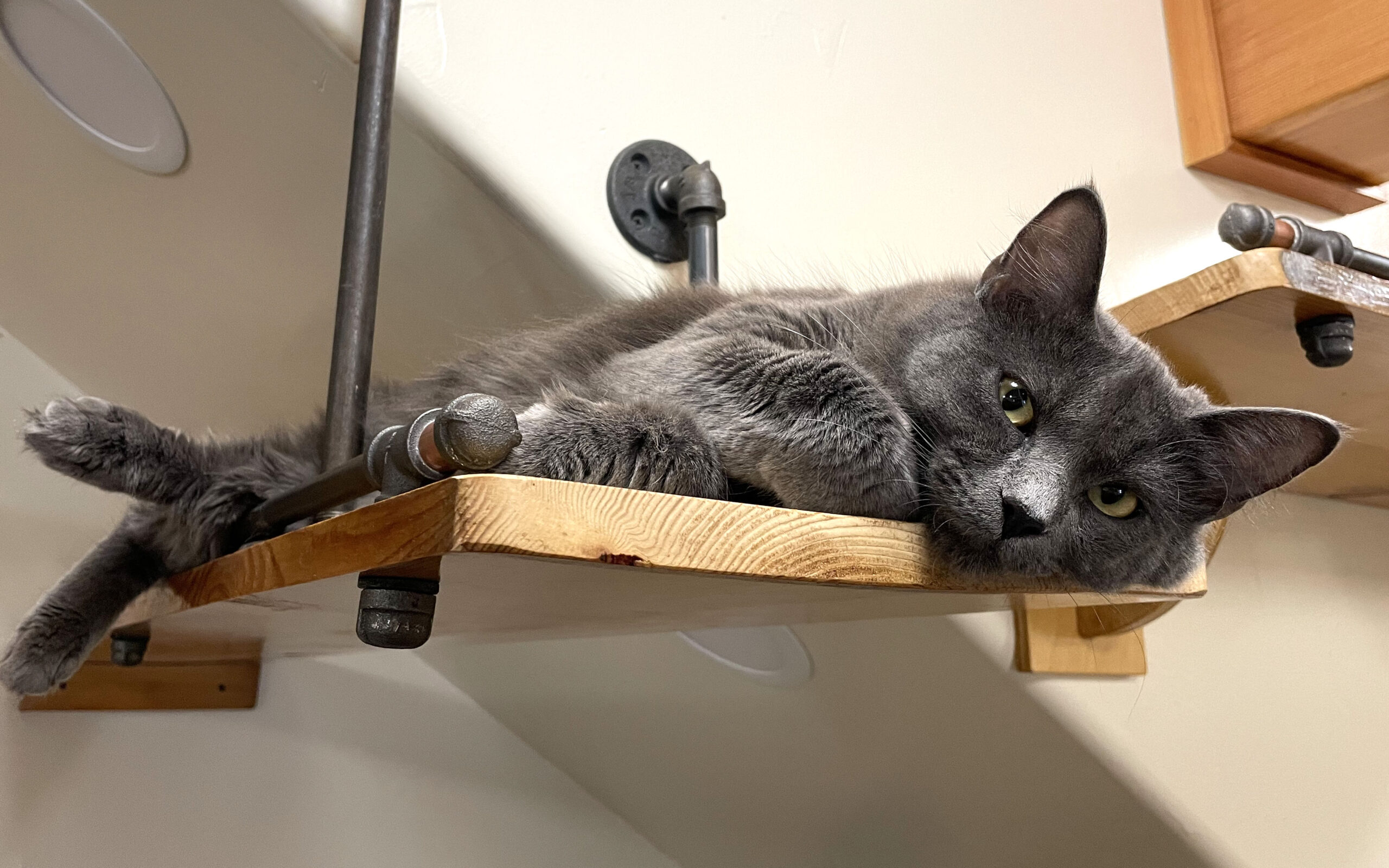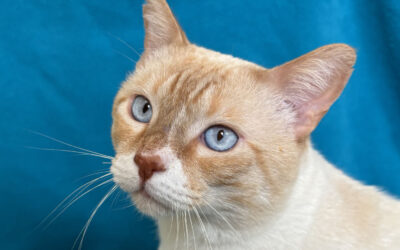Experts think dogs have been domesticated for around 10,000 years. It’s estimated that cats have been domesticated half to a third of that time. As pack animals, dog survival depends on being able to understand the communications of their pack mates. Dogs have fine-tuned these skills over the millennia, even to the point where it’s possible some dogs have evolved eyebrows to more closely imitate the facial expressions of humans.
 Cats, like all animals, need food, water and shelter to reproduce and raise their young. Because their prey is small, they usually hunt by themselves. It doesn’t take a pack of cats to bring down a mouse, so packs are simply not useful for a cat’s survival. However, they form colonies where there are enough resources to support them.
Cats, like all animals, need food, water and shelter to reproduce and raise their young. Because their prey is small, they usually hunt by themselves. It doesn’t take a pack of cats to bring down a mouse, so packs are simply not useful for a cat’s survival. However, they form colonies where there are enough resources to support them.

Cat colonies are different from dog packs. While leaders do emerge, the hierarchies are much more fluid and changeable, depending on resources and personalities. This isn’t to say cats don’t have a range of social skills. They’re just not as high a priority as they are with dogs.
As Temple Grandin says in her book, Animals Make Us Human, when we force unrelated animals to live together in a small space, we set up a situation that’s very different from the ones they would choose in the wild.
She says having more than two dogs creates a forced pack. Having more than two cats is likewise creating a forced colony where the humans control the resources. This truly makes us the Guardians of our cats.
Cats are like wild animals
According to their behaviors, your house cats may have more in common with a wolf than with a poodle. They have a more subtle range of facial and body expression to let you know what they’re thinking. The reason for this is cats usually hunt by themselves, so they need to mask their emotions in order to protect themselves from predators. Because of that 5,000 to 7,000 year gap, most cats’ ability to read your body language isn’t as high as most dogs.
But the biggest difference is that a wild animal cannot be forced to do something through punishment. As scientist-trainer Karen Pryor says, if you pull on a wolf to make it go for a walk as you would a dog, you’ll have a terrified animal, fighting the collar and leash as hard as it can.
It’s the same with a cat. That doesn’t mean a cat can’t be taught to walk on a leash. However, reward a cat for accepting the collar without fear, then the leash, then walking forward in a non-threatening environment and it’s a completely different picture.
Cats almost always react to punishment with fear and, if the punishment is severe enough, they will shut down completely. This can permanently ruin your relationship with your cat.
Five main emotions
 Animal scientist Temple Grandin says that animals have 5 main emotions we can stimulate when interacting with them. The negative ones are fear, panic and rage; the positives ones are seeking and play.
Animal scientist Temple Grandin says that animals have 5 main emotions we can stimulate when interacting with them. The negative ones are fear, panic and rage; the positives ones are seeking and play.
Panic is the abandonment emotion, when an animal feels abandoned by its parent, pack or guardian. You can hear this in the cry of a lost kitten. Fear happens when an animal feels threatened and can lead to defensive or shutdown behaviors. Rage is when an animal is pushed past the point of frustration. Experts think rage is response to the fear an animal has when it’s held down by a predator, triggered by the adrenaline rush needed to break free and survive.
 Play is self-explanatory, necessary to help animals learn but also a pure expression of joy. Seeking describes the classic curiosity of a cat, but is found in all animals unless they’ve been shut down by fear.
Play is self-explanatory, necessary to help animals learn but also a pure expression of joy. Seeking describes the classic curiosity of a cat, but is found in all animals unless they’ve been shut down by fear.
If you can get an animal to play or go into seeking, that can cancel fear or rage. So if we have a cat who’s about to attack another cat and it can be distracted by a toy, the rage will dissolve into play.
Once you learn how cats think, you can learn how to influence their behavior. This is why the basic philosophy of Happy Cats Haven is: PLAY YOU ARE A CAT. Positive cat training, including clicker and play therapy, has been proven to go as quickly and deeply into the brain as fear does. While it can’t replace those fear and rage memories, it can create new ones of joy.
 In the case of a fearful or anxious or depressed cat, this can rebuild confidence and strengthen the feline-human bond. Even well-adjusted cats benefit. Positive cat training can make them more loving, healthier and yes, more happy!
In the case of a fearful or anxious or depressed cat, this can rebuild confidence and strengthen the feline-human bond. Even well-adjusted cats benefit. Positive cat training can make them more loving, healthier and yes, more happy!




